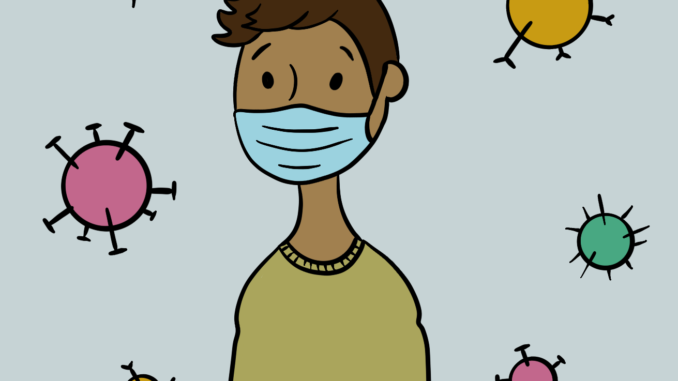
New COVID variants, flu, Respiratory Syntactical Virus cases uptick, doctors encourage vaccinations
As cold and flu season approaches, a combination of viruses make this winter an inundation of illnesses. With new COVID-19 variants on the horizon, a particularly severe strain of the seasonal flu and the presence of Respiratory Syntactical Virus (RSV), The New York Times has dubbed our current state a “tripledemic.”
With relaxed masking and social distancing protocols nationwide and on campus, these variants are striking at a time when defenses are down. The most recent COVID variants derived from Omicron, XBB, BQ.1 and BQ.1.1, are making a rise globally and surpassing other forms of the virus in severity, transmissibility and ability to evade immunity.
In terms of what this “tripledemic” may look like for Lewis & Clark, it will depend on the cases in Oregon of all three viruses. LC has very minimal restrictions due to the small number of COVID cases present on campus and the 98% student vaccination rate. According to The Bark, there have only been five positive COVID cases at LC during the period from Oct. 29 to Nov 4. If cases of the three viruses did rise locally, however, mask wearing and social distancing measures could be reinstated, following the trend of last spring when protocols were reinstated after being repealed.
Medical professionals stress the importance of getting vaccinated and staying up-to-date with vaccines because,while they may not fully prevent infection, they limit the effects and spread of the variants. When hospital beds and ICU space is only increasing in demand, it is critical to mitigate severity through vaccination in order to avoid hospitalization. LC encourages students to take advantage of the free COVID booster flu shot clinics on campus.
According to The New York Times, “Coronavirus cases are low, but are beginning to rise in some parts of the country. Several European countries, including France, Germany and Britain, are experiencing an uptick in hospitalizations and deaths, prompting experts to worry that the United States will follow suit, as it has with previous waves.”
As of early November, BQ.1 and BQ.1.1 constitute roughly 35% of new COVID cases in the U.S., according to Time Magazine.
Not only are these new strains adept at evading both vaccine-derived immunity as well as infection-derived immunity, they are resistant to drugs which protect immunocompromised people, such as Evusheld and Bebtelovimab. The most recent Pfizer and Moderna vaccines were not designed for these variants, but getting boosted can still raise overall antibody levels which helps with symptom severity and duration of illness.
In addition to rising COVID concerns, this flu season is predicted to be the worst in over a decade. According to the Centers for Disease Control and Prevention as of Nov. 3, there have already been over 880,000 cases of flu-like illness, 9,100 positive influenza tests and 6,900 hospitalizations. These numbers are the highest recorded this early in the season since the 2009-10 swine flu pandemic.
“Public health experts urged Americans, especially those at high risk, to get a flu shot before cases rise much higher,” The New York Times states. “Like the Covid vaccines, the flu vaccine may not be a perfect match for the circulating variant, but even so, it roughly halves the risk of hospitalization in both children and adults.”
RSV poses yet another concern, as cases are on the rise nationally. It is a highly contagious virus that is a particular threat among infants and children under five years. Although this is not a direct threat to the LC community, the rapid inundation of RSV cases are filling hospital beds.
While most cases of all three viruses are rather mild, they are still expected to lead to millions of sick Americans and strain healthcare resources this coming winter.
According to ABC News, “Public health experts said one of the possible reasons why cases and hospitalizations are so high is because during the COVID-19 pandemic, when schools and businesses were closed and people were staying at home, they weren’t exposed to many viruses. Due to this, people may be more susceptible to getting sick, as their immune systems are remembering (or learning for the first time) how to fight off these infections.
Immunocompromised people, elderly people and pregnant people are most at risk during this time and should plan accordingly. This can include wearing a mask when around others, socially distancing when necessary and staying up-to-date with all vaccinations.
Subscribe to the Mossy Log Newsletter
Stay up to date with the goings-on at Lewis & Clark! Get the top stories or your favorite section delivered to your inbox whenever we release a new issue.

Leave a Reply